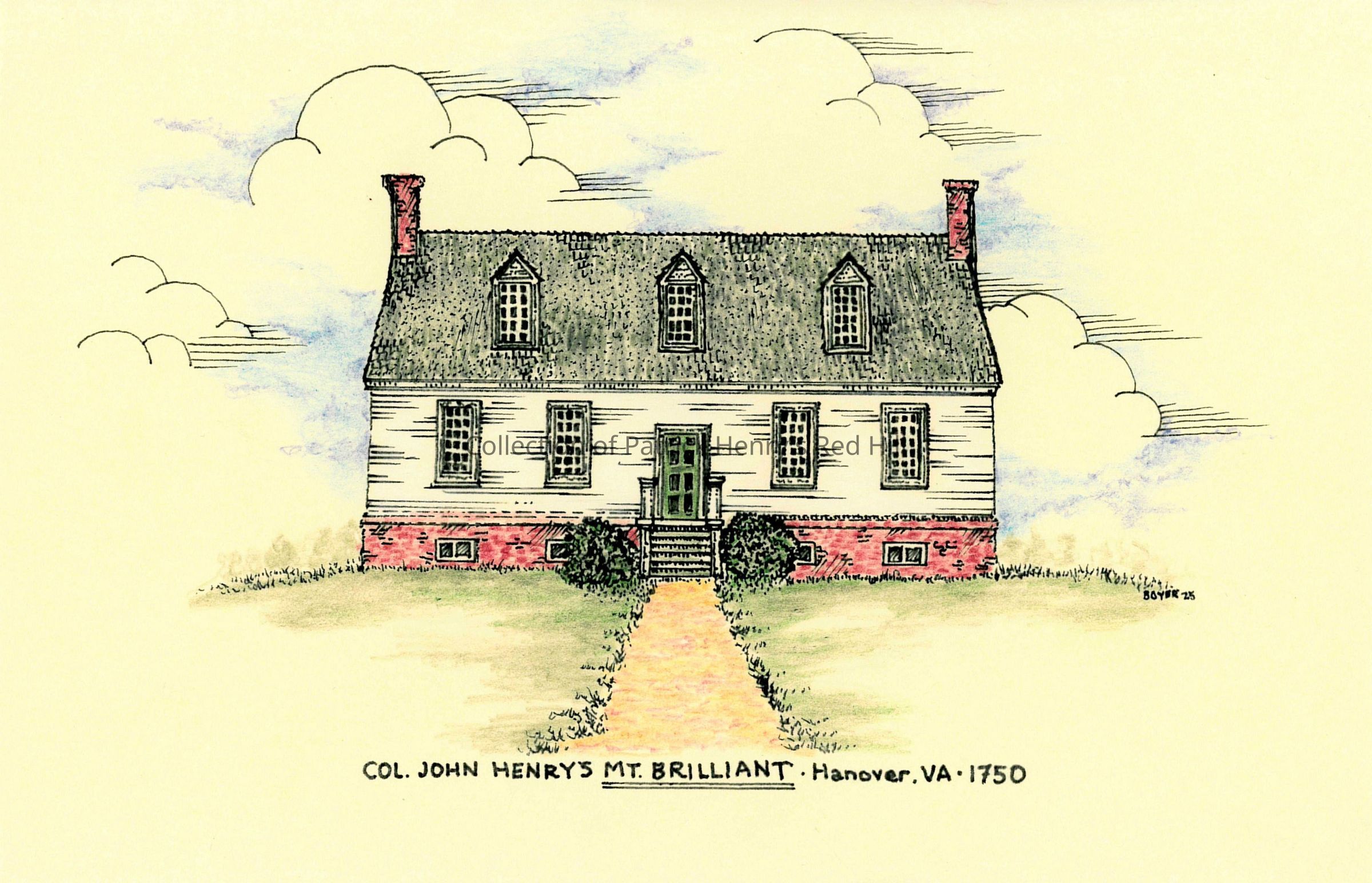Notes
This reconstruction drawing depicts the possible form of Mount Brilliant, the former home and plantation of John Henry (ca.1704–1773) and Sarah Winston Henry (1710–1784), parents of Patrick Henry.
During his adolescence, Patrick Henry and his family moved to the 630-acre plantation located 20 miles west of his birthplace, Studley, in the upper piedmont section of Hanover. According to well-founded accounts, their new home, which was built for John Henry, was “an English style, story and half frame structure with dormer windows, sturdily built with brick foundations and hand hewn oak framing with wooden pins instead of nails.” From this modest dwelling-house, the land gently sloped down a half mile through the fertile lowlands toward the beautiful South Anna River to the north and Stone Horse Creek to the east.
Although Mount Brilliant was more isolated than Studley, upper Hanover was home to some of the wealthiest residents of the county. Situated on the same elevated ridge about a mile and a half northwest of their home was the plantation of John Syme Jr. (1727–?), Patrick Henry’s step-brother. A short distance up the South Anna River, on the east side of Allen’s Creek, stands the home of their wealthy neighbor and friend, Nathaniel West Dandridge (1729–1786). The uncle of Martha Washington (1731–1802), Dandridge was one of the largest landowners in the county. Tax records for 1763 list him as owning more than 7,000 acres in Hanover alone.
During the 1760s, John Henry established a classical school at Mount Brilliant to improve his fortunes, which had suffered due to his inexperience with plantation management. Starting with ten boys, his school grew to double that size by the time of his death early in 1773 at Mount Brilliant. Shortly after his death, his widow was invited by their daughter, Jane (1737–1819), and son-in-law, Samuel Meredith Sr. (1732–1808), to live with them at their home. In 1780, Sarah Winston accompanied the Merediths to their new home, Winton, in Amherst County, where she died in November 1784.
In the late 1770s, Mrs. Henry sold Mount Brilliant to Robert Carter Nicholas (1728–1780), the former treasurer of the colony, who renamed the plantation Retreat. During the Revolutionary War, the British army, under Lord Cornwallis, encamped briefly at Retreat. Although Cornwallis treated the widow Nicholas with utmost respect, her plantation was left devastated by the military. According to local lore, British soldiers killed at a nearby skirmish are buried on the property.
Standing on the property today is a two-story brick house called the Retreat, which some have described as the original Henry home. The molding, brick work, machine-cut nails, and mill-sawed boards, as well as the overall shape of the building, suggest that the present structure was built about 1820. Architectural examination of the standing structure offers no evidence of mid-18th-century material or detailing. It is likely that the earlier home built for John Henry was dismantled shortly after the existing house was built, and that some timber from the original house was used to construct a barn, which has since been torn down. A depression in the earth and fragments of brick mark the site of the original Henry home at Mount Brilliant.
Based on archival and archaeological evidence, artist Daniel E. Boyer drew this reconstruction of the original home. It is believed to be one of the most accurate of its kind and was given to the Patrick Henry Memorial Foundation on March 7, 2025.
